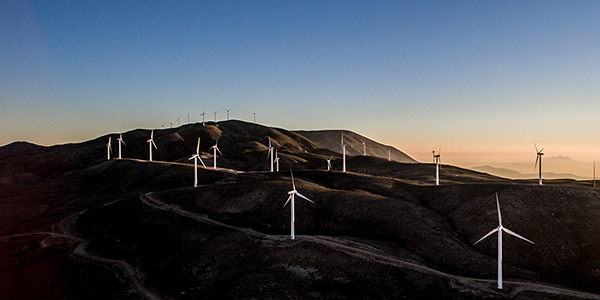
 |
Dr Christian Calvillo 11 June 2018 |
Generally speaking, policy making is a complex process. However, certain types of policies are particularly challenging, such as climate change policy. This is due to the importance and complexity of the problem, which is global in nature and scale and it is linked to pretty much all human activities. Given the scale and complexity of the climate policy challenge, policy makers rely on a variety of sources to inform policy decisions, including the opinion and advice of stakeholders and experts, and the use of models.
The Scottish TIMES model
The Scottish Government has used the Scottish TIMES model to inform its Climate Change Plan (CCP) TIMES is an energy system-wide bottom-up model, which uses linear-programming to find a least-cost future energy system scenario, according to a number of user constraints (including greenhouse gasemissions, energy use, etc.). TIMES covers all the processes of the energy system, from primary resources through all the processes that transform, transport, distribute and convert energy to supply energy services. Due to this holistic energy system approach, TIMES is a widely used tool to analyse decarbonisation scenarios (see this report for a more detailed description of TIMES).
Models are commonly used tools to understand complex process dynamics. They vary greatly in their sophistication and complexity, their scale and depth and their application. However, by their very nature, all models are only approximations of reality, and involve a range of simplifications and assumptions.
To assess how ‘good’ a model is, as well as thinking about how it is being applied and its outputs used, it is necessary to ‘validate’ it by contrasting its results with reality. Unfortunately, the more complex the model is, the more difficult is to validate it, and in some cases a formal validation is not possible or practical. TIMES is such a model. TIMES considers thousands of technologies and processes and looks to a long-term planning horizon that is affected by numerous sources of uncertainty, so formal validation is not an option. In order to ‘trust’ the results of TIMES, it is important to understand its limitations, assumptions, modelling considerations, and input data.
The Scottish Government knows this. Therefore, in the accompanying technical annex of the Climate Change Plan, new levels of detail on the modelling process and analysis developed with the Scottish TIMES model were included. This extra description is a very welcome addition that addresses, at least partly, the concerns raised about the modelling approach taken when the first CCP draft was released (January 2017).
Improvements and more information on the modelling approach
The CCP technical annex mentions the main modelling considerations used in Scottish TIMES for the climate change plan and the ‘evolution’ of the modelling process, briefly showing how the considerations and changes made in the model affected the results. The technical annex is relatively brief but it provides enough information for someone with some experience using energy system wide models such as TIMES, to understand in general terms what has been done (for non-energy modellers this might still be a bit obscure).
The technical annex shows two examples of ‘good practice’ in the Scottish TIMES modelling process:
Constant updating of the input data used in the model.
Note that Scottish TIMES is based on the UK TIMES model, so the easiest starting point was to use the UKTM data to analyse the Scottish case. However, the technical annex suggests that the Scottish Government has put considerable effort into improving and updating the model, by using several new, updated, and apparently reliable data sources. This provides more certainty on the results.
Interaction with other models to better inform TIMES.
TIMES is a very powerful tool for energy policy analysis, but it has certain limitations. It is therefore sensible to use other models - alongside TIMES - to address those limitations (see our previous CXC report for further discussion on this). The technical annex mentions the interaction with other models to contrast TIMES results or to improve the modelling of certain sectors. For instance, the use of the Scottish Electricity Dispatch Model (SEDM) to test the generation mix obtained with TIMES, or the improvements done to the residential and transport sector models.
Outstanding issues
Despite the improvements developed, the technical annex leaves some questions open.
Firstly, some data clearly still comes from the UK TIMES model (in particular, the data for the industry and service sectors), but it is not clear exactly what specific data (or at least how much) is inherited by Scottish TIMES, and how reliable (or relevant for the Scottish case) that data is.
Another concern comes from the use of technology (power plant) constraints - for instance, projections on wind electricity generation in following years. According to the technical report, these constraints are set based on installed and planned capacity for the different power plants. This seems to be a sensible approach. However, it would be interesting to know if ‘alternative’ scenarios have been considered as well, in the case that some of these plans are cancelled or delayed (as a consequence of Brexit, maybe?).
Of course, it is impossible to know with any certainty what is going to happen across all technologies, but it would be interesting to know potential impacts of these changes (if any), at least in those technologies that present the higher risks or are set to deliver the greatest carbon abatement.
Similarly, certain sectors seem to be over constrained – meaning that a potentially overly optimistic or biased trajectory for technology deployment is assumed. For instance, the residential sector presents a series of such constraints including:
- Minimum level of biomass boilers
- Smart meter rollout levels (following policy targets) and their effect on energy demand
- Minimum levels of energy conservation measures (following Energy Efficient Scotland targets)
- Constraints on district heating deployment
- Minimum levels of low carbon heat technologies (following policy targets)
These constraints try to replicate real life policies and objectives, which seems a sensible approach. However, it is not clear how wide the range of solutions can actually be, or what effect these constraints have on how the model chooses ‘optimal’ solutions (and therefore what different set of solutions might be chosen by the model in the absence of some of these constraints.) Moreover, the intention is for TIMES to inform practical policy analysis and decisions. On this basis, it is important that TIMES outputs are as transparent as they can be, link to/are informed by other models dealing with particular elements of the problem as far as possible, but, perhaps most of all, take their place in the wider evidence base that informs political decision making.
An ongoing process
Climate change policy is extremely difficult to plan without a tool such as TIMES, due to the complexity and long-term scope of it. The Climate Change Plan technical annex document recognises that this is an ongoing process that requires constant updating of the models. This updating allows model users to adapt them to new technological advances, and in principle allows analysis of the effectiveness of policies, which could trigger policy learning, revision and planning accordingly. It also shows how TIMES benefits from further improvements and from the interaction with other models.
It is, therefore, sensible to allow the academic community and relevant stakeholders to assist the Scottish Government with these model managing tasks. The expertise of a wider set of users will definitely continue to improve Scottish TIMES, allowing for more reliable and timely policy analysis.
Tags: News & Blogs